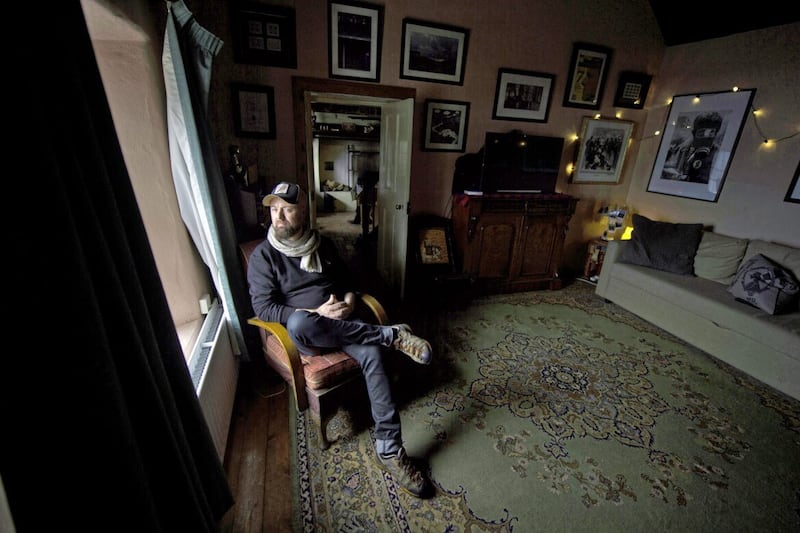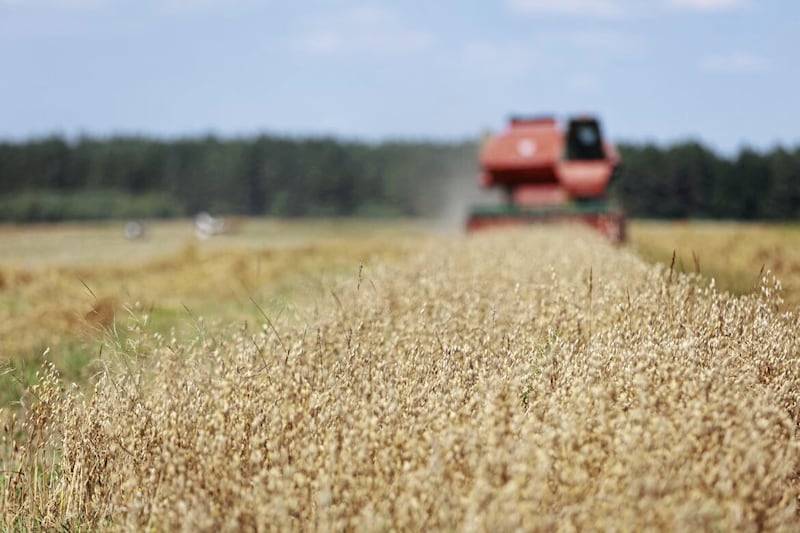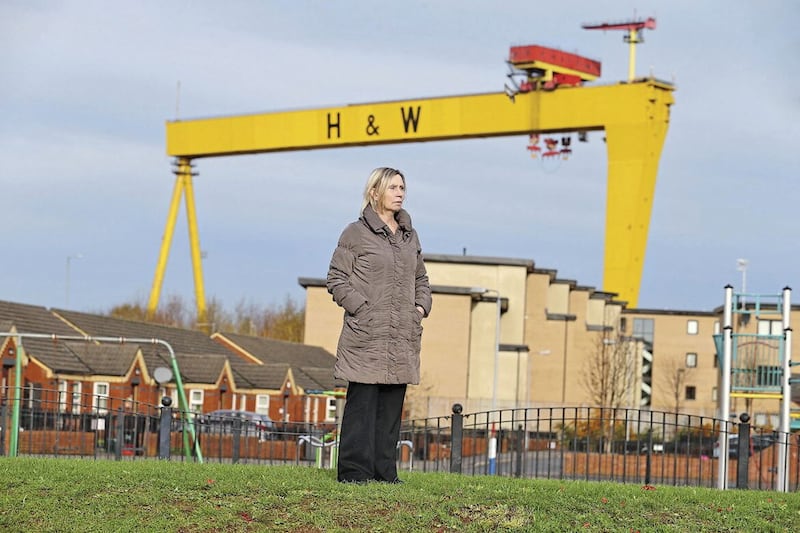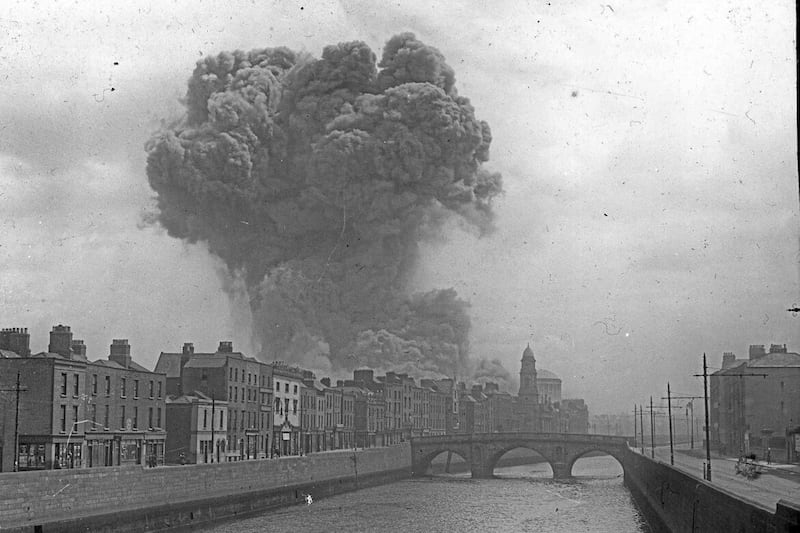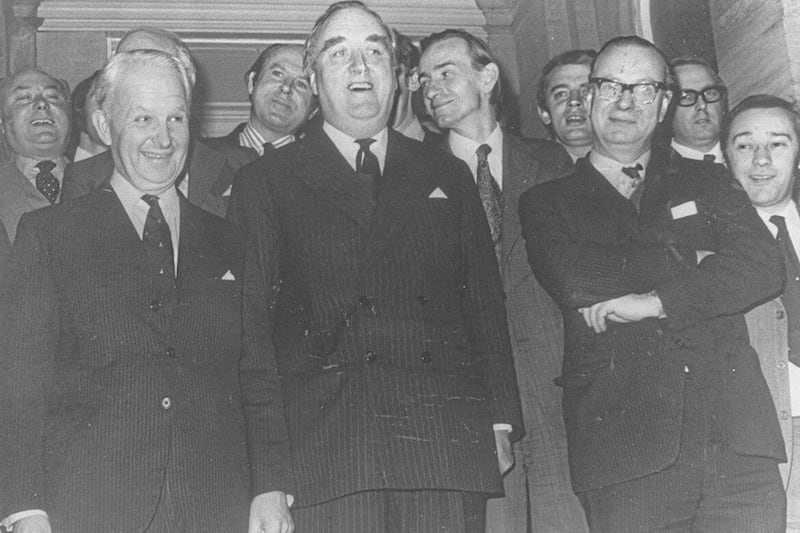THE railway map of Ireland is very different today to the one at the onset of partition just over 100 years ago.
Today's map is striking by the stark image of a gaping hole in an area that once had a vibrant rail network – the north west of Ireland.
A new campaign has recently started to reopen the North West Rail Corridor, to bring back rail services that have disappeared since the 1960s in places like Donegal and Tyrone, and to make people less dependent on cars.
Unquestionably the main reason for the decline in rail services in Ireland from 1920 onwards was the advance of motor travel.
For example, in Northern Ireland alone, licensed motor vehicles increased from 5,000 in 1921 to 66,000 in 1927. Partition also had an impact, as it had with other infrastructure-related areas.

By drawing a line and creating a physical border spanning almost 300 miles, some of the most challenging issues faced by both jurisdictions after partition related to infrastructure and service-based issues such as railways, fisheries and postal services.
Speaking in August 1922, J.T. Farrell of the Railway Clerks Union stated: "No employees were more affected by the problem of partition than railway employees... the Great Northern Railway crossed the border at 11 different points, the Londonderry and Lough Swilly Railway had its head and neck in the north-east and its tail in the twenty-six counties.
"They had the same in connection with the Donegal line, and the Dundalk and Greenore railway had one leg in either direction."
The complexity of the railway infrastructure and ownership within Ireland was compounded dramatically by the creation of a border.
Five railway companies were directly affected by the new border by serving both sides of it; the Great Northern; the County Donegal; the Londonderry and Lough Swilly; the Sligo, Leitrim and Northern Counties; and the Dundalk, Newry and Greenore railways.
Before the creation of the two Irish political entities, the prospect of amalgamating the many private railway companies had been discussed for as long as there had been different railway companies.
Under the Government of Ireland Act 1920, the railways were a reserved service to be treated as an all-Ireland concern that would come under the control of the Council of Ireland once it was established between the northern and southern jurisdictions.
With the Anglo-Irish Treaty of 1921 superseding the Government of Ireland Act for the 26 counties, railways remained a reserved service in Northern Ireland. This meant the Irish Free State government could legislate on railways within its jurisdiction, but the northern government could not for its area. All railway legislation affecting the north had to come before the Imperial parliament in Westminster.
Relationships between both Irish governments only complicated matters further. The Free State government, intrinsically opposed to partition, sought unification of the railway companies, while the northern government, looking to assert its independence from Dublin in every feasible way, wanted the Free State government to have no say nor control of any railway issue within its jurisdiction.
When Joseph McGrath, the Free State's Minister of Industry and Commerce publicly called for the unifying of all Irish railways on an all-Ireland basis in December 1922, John Andrews, Minister of Labour for Northern Ireland, responded: "Mr McGrath has no more right to interfere with or propose legislation affecting Northern Ireland railways than I have to interfere with or propose legislation affecting the railways in Southern Ireland."
The Free State government was forced to decide on the future of the railways, for its jurisdiction at least. Disruptions caused by the increased usage of motor travel, the civil war, the threat of strikes and the unviability of some of the smaller railway companies led to serious problems for the industry.
During the civil war, railway lines countrywide were continuously attacked by the anti-Treaty IRA. The uncertainty with train travel in the south resulted in some people preferring to get a boat from Cobh in Co Cork to Liverpool in England to reach destinations in Northern Ireland, a considerably longer and more complicated journey, but one that was safer.
The Free State government initially hoped the railways would group together, and if not, it planned to bring in legislation to unify the railways. The biggest dilemma was caused by the railway companies that straddled both sides of the border, particularly the Great Northern Railway, which had one third of its lines in the Free State and 50 per cent of its shareholders registered in the south.
While the Free State's preferred option was for a unified railway service throughout Ireland, the northern government looked at the possibility of amalgamating the railway companies in Northern Ireland with British railway companies.
The Northern Ireland prime minister James Craig and the president of the executive council of the Irish Free State, W.T. Cosgrave, met in 1923 and 1924 and agreed that the Free State would legislate for railway companies based solely in the Free State territory and the northern government would not look to amalgamate railway companies in Northern Ireland with British ones.
The Free State government duly introduced legislation to Dáil Éireann, the Railways Act, 1924, which unified all Free State railway companies, except the Listowel and Ballybunion monorail.
In total, 26 companies merged to form the Great Southern Railways. For railway companies based solely in the north or working across both sides of the border, both governments agreed to continue with the "present well-established and competitive system of private management".
The Free State's decision in 1923 to impose a customs barrier had arguably, except for increased motor travel, the largest impact on railways in post-partition Ireland. From April 1 1923, every railway line crossing the border was approved for importation and exportation of merchandise.
At the time, there were 20 border-crossing points on railway lines, 10 on the Fermanagh border alone. People wishing to move merchandise across the border had to submit a carrier's report to customs officials where the actual goods were tracked against the documented amount and the relevant fees were then gathered.
Customs examinations meant more space was needed at railway stations to bring rail travel under the new customs regime, space that was already in short supply.
Goraghwood, close to Newry, became a major customs examination stop-off for many cross-border travellers from thereon in.
Stops at Goraghwood lasting for 45 minutes became commonplace. The introduction of customs barriers impacted greatly on rail travel times.
Railway services suffered considerable disruptions with some lines zigzagging the border on numerous occasions, customs examinations initially expected for each crossing. A train running from Clones to Cavan crossed the border six times in eight miles.
Common-sense soon prevailed, though, and it was decided to curb the examinations to just the first point of entry beyond the border. Wagons had to be sealed by custom officials in one jurisdiction, only to be opened once returning to the same jurisdiction after passing through 'foreign' territory.
Tea cars were also allowed to operate on rail service without customs being charged on items such as tea, sugar, biscuits, cake, cigarettes, chocolates and aerated waters, as they normally would.
The introduction of customs barriers saw the immediate closure of the Keady to Castleblayney line by the Great Northern Railway.
The following decades saw further closures of lines and railway companies – the Sligo, Leitrim and Northern Counties Railway, County Donegal Railways and then Portadown to Derry and Goraghwood to Newry in 1965, leaving the north-west of Ireland without railways, as it remains to this day.
:: Cormac Moore is author of Birth of the Border: The Impact of Partition in Ireland (Merrion Press, 2019).


